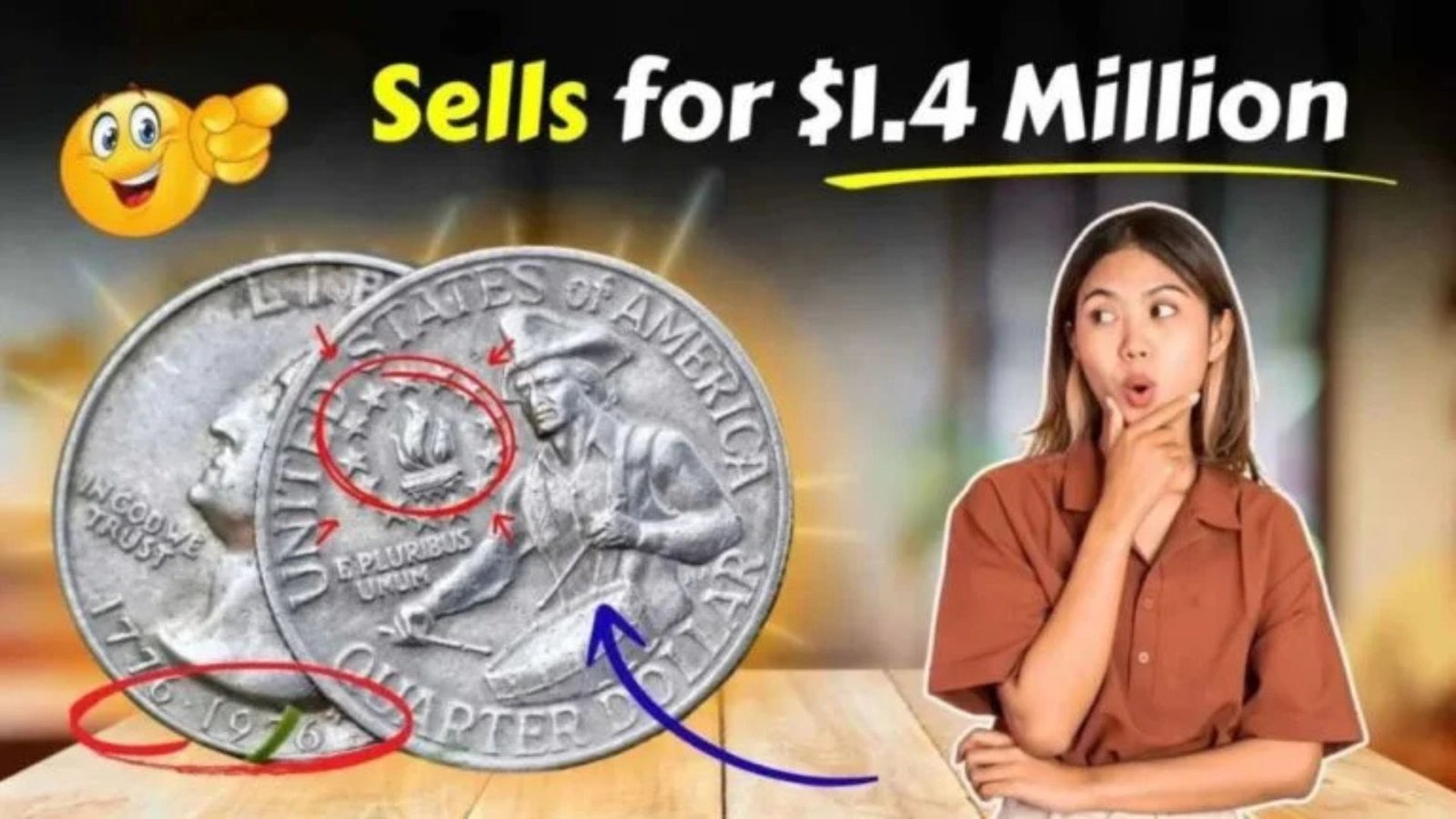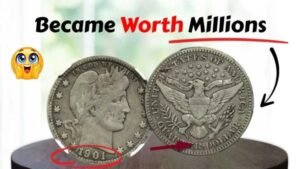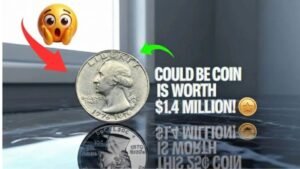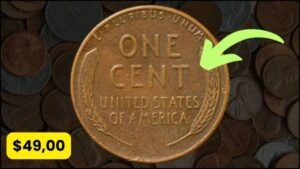In 2025, a rare 1976 Bicentennial Quarter sold for a staggering $1.4 million at an auction, leaving coin collectors and everyday people wondering if they might have a fortune sitting in their change. This unique quarter, minted to celebrate America’s 200th birthday, isn’t just any coin—it’s a potential goldmine!
we’ll break down what makes this Bicentennial Quarter so valuable, how to spot one, and whether you could have a million-dollar coin in your wallet. Let’s dive in with simple tips and clear steps to help you check your coins.
What Is the Bicentennial Quarter?
The Bicentennial Quarter is a special coin released in 1975 and 1976 to mark the United States’ 200th anniversary. Unlike regular quarters, it has a unique design:
- Front (Obverse): Features George Washington’s portrait, like other quarters.
- Back (Reverse): Shows a colonial drummer and a torch surrounded by 13 stars, symbolizing the original 13 colonies.
- Date: Displays “1776-1976” to celebrate the bicentennial.
Most of these quarters are worth just 25 cents, but certain rare versions can fetch millions due to specific features or errors. Let’s explore why one sold for $1.4 million.
Why Did This Bicentennial Quarter Sell for $1.4 Million?
The quarter that sold for $1.4 million wasn’t your average coin. Here’s what made it so special:
1. Rare Minting Error
This coin had a unique mistake from the minting process, like a double strike or an off-center design, making it one-of-a-kind. Such errors are rare and highly sought after by collectors.
2. Silver Composition
Most Bicentennial Quarters are made of copper and nickel, but some were struck in 40% silver for special collector sets. Silver versions, especially in pristine condition, are worth more.
3. Perfect Condition
The $1.4 million quarter was in “gem” condition, meaning it had no scratches, wear, or damage. Coins in top-notch condition are rare and command high prices.
4. Provenance and Rarity
This quarter had a documented history (provenance) that added to its value. It may have come from a limited mint run or a famous collection, making it a trophy for collectors.
How to Spot a Valuable Bicentennial Quarter
Not every Bicentennial Quarter is worth millions, but you might have a valuable one. Here’s how to check your coins:
Step 1: Look for the 1776-1976 Date
Check the date on the front. If it says “1776-1976,” it’s a Bicentennial Quarter. Regular quarters from other years won’t qualify.
Step 2: Check the Mint Mark
Look for a tiny letter on the front, near Washington’s neck:
- No Mark: Made in Philadelphia, common.
- D: Made in Denver, also common.
- S: Made in San Francisco, often silver and more valuable, especially from proof sets.
Step 3: Inspect for Errors
Examine the coin for minting mistakes, such as:
- Double Die: Letters or images appear doubled.
- Off-Center Strike: The design is misaligned.
- Missing Letters or Numbers: Parts of the design are incomplete.
Step 4: Check the Material
Hold the coin to see if it feels heavier or sounds different when dropped. Silver quarters have a distinct ring compared to copper-nickel ones. You can also weigh it—silver quarters are slightly heavier (about 6.25 grams vs. 5.67 grams for copper-nickel).
Step 5: Assess Condition
Use a magnifying glass to check for wear. Coins in “uncirculated” or “proof” condition (shiny, no scratches) are more valuable.
Common vs. Rare Bicentennial Quarters
| Feature | Common Bicentennial Quarter | Rare Bicentennial Quarter |
|---|---|---|
| Material | Copper-Nickel | 40% Silver |
| Mint Mark | D or No Mark | S (San Francisco) |
| Condition | Circulated, worn | Uncirculated or Proof |
| Errors | None | Double Die, Off-Center, etc. |
| Value | $0.25 | $100 to $1.4M+ |
Where to Find a Bicentennial Quarter
You might already own a valuable Bicentennial Quarter without knowing it! Here’s where to look:
- Loose Change: Check your coin jar or wallet.
- Old Coin Rolls: Banks or coin shops may have unopened rolls from the 1970s.
- Inherited Collections: Family heirlooms might include silver proof sets.
- Flea Markets or Garage Sales: Old coin collections sometimes pop up at bargain prices.
How to Get Your Bicentennial Quarter Appraised
If you think you have a rare Bicentennial Quarter, don’t clean it—cleaning can lower its value! Follow these steps:
- Visit a Coin Dealer: Find a reputable local dealer or numismatist (coin expert).
- Contact Auction Houses: Major houses like Heritage Auctions specialize in rare coins.
- Use Online Tools: Apps like PCGS CoinFacts can help identify and estimate value.
- Get a Professional Grading: Services like PCGS or NGC grade coins for a fee, certifying their condition and authenticity.
Tips to Avoid Scams
The excitement around million-dollar coins can attract scammers. Protect yourself:
- Beware of Fakes: Counterfeit coins exist, so always verify with an expert.
- Avoid “Too Good to Be True” Offers: If someone claims your quarter is worth millions without proof, be skeptical.
- Research Dealers: Choose dealers with good reviews and certifications from groups like the American Numismatic Association.
Why Collectors Love the Bicentennial Quarter
The Bicentennial Quarter isn’t just about money—it’s a piece of American history. Its unique design and connection to the U.S.’s 200th birthday make it a favorite for collectors. Rare versions with errors or silver content are like finding a needle in a haystack, driving their value sky-high.
Could You Have a Million-Dollar Bicentennial Quarter?
While most Bicentennial Quarters are worth their face value, a rare few could make you rich. By checking for mint marks, errors, and silver content, you can spot a potential treasure. So, grab your change jar, magnifying glass, and start hunting—you might just find a Bicentennial Quarter worth more than you ever imagined!
Have you checked your coins yet? Share your finds or questions below, and let’s uncover the next million-dollar Bicentennial Quarter together!




